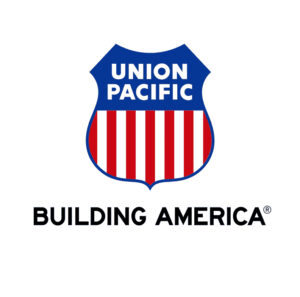 PITTSBURG, Texas — Cleanup continues after at least 20 cars of a Union Pacific train derailed Sunday afternoon in Pittburg, Texas.
PITTSBURG, Texas — Cleanup continues after at least 20 cars of a Union Pacific train derailed Sunday afternoon in Pittburg, Texas.
KLTV reports Pittsburgh Mayor David Abernathy said a train of more than 13,000 feet was involved, with two different portions derailing.
No injuries were reported. KXTW-TV reports the accident occurred about 1 p.m., and involved a train of mixed commodities. The rail line is expected to reopen this morning (March 8).
The cause of the derailment is under investigation. Pittsburg is about 60 miles southwest of Texarkana, Texas.














The issue isn’t length, per se. The real issue is pre-blocking cars for specific destinations. When you pre-block cars, especially strings of empty lumber racks or strings of empty short tank cars mixed in with strings of loads or long draft cushion cars, the buff and draft forces within a long consist become unmanageable.
Case in point, the CN derailment a few years ago. Analysis of the derailment illustrated how, upon application of the brakes on a curve, a string of loaded, long travel cushion boxcars developed enough inertial force to push the empty tank car off the rails, leading to the derailment of several cars.
Another example is the recent UP derailment if Kansas City. If you look at the video, you can hear the slack come in and travel back through the consist. The freight was coming downgrade off a bridge and onto a curved section of track. The buff compression force was enough to lift push three empty centerbeams and three empty tank cars off the rail. The loaded covered hopper ahead of the centerbeams was also lifted off the rails. However, once the couplers failed, the hopper fell back onto the rails.
The opposite is true as well. The stringline of multiple empty covered hoppers on CSX in Fostoria, OH, a few years ago is an example of extreme draft forces. The long freight was transiting around the northeast quadrant when it derailed. The report indicated the engineer had released the brakes and was beginning to bring on power when the stringline occurred. CSX blamed poor train handling by the engineer. However, if you look closer at the circumstances, there is more to the story. First, the quadrant was constructed in a time when car lengths and train lengths were short. Car weights were light as well. All was well and good at that time. Second, the brakes were still releasing two miles back as the engineer began to apply power. Like brake sets, brake releases are not uniform. There is a high likelihood that many brakes were still partially applied when power was applied. And third, the centering forces of tapered wheels were insufficient to keep the wheel flanges from digging in to the inside rail head. The results was stringlining the empty hoppers.
While train length is an issue, it is not the only issue. Track geometry and engineering play a major role as well. Many of the rail lines in the US were engineered and constructed in the 1800s and early 1900s. Sure there have been many upgrades over the years. However, most, like the NE quadrant in Fostoria, were constructed when cars were short and trains were lighter and shorter.
Blocked grade crossings are only one piece of a larger puzzle.
Agreed Mark. Something needs to be done about train length. A lot of these trains are put together haphazardly. Late last year I was watching a LONG NS freight in Pittsburgh. A lot of empty center beams in the middle with a lot of loads on the rear. I could only shake my head. And engineers are no longer allowed to run the trains. Now they have to let the computer run it but if anything happens…………
The Surface Transportation Board and the Federal Railroad Administration should ban train lengths over a mile and a half. These close to three mile long distributed power trains block public grade crossings for lengthy periods especially near yards, passing sidings and crew change points. I do not know if train length contributed to the cause of this derailment, but the report says the train derailed in two different places.